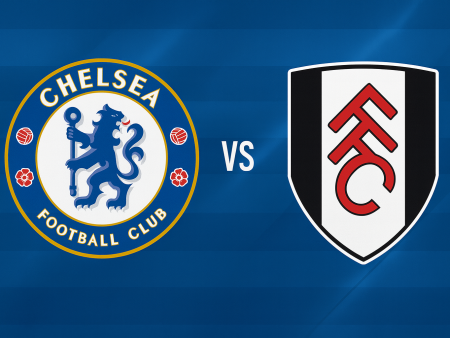Canadian Premier League Matchday 2: In-Depth Tactical Analysis
The Canadian Premier League's second weekend delivered drama, tactical intrigue, and positional battles as the league's top contenders staked their early claims. This comprehensive tactical roundup breaks down each fixture, highlighting key patterns, standout performers, and the most significant tactical tweaks from Matchday 2.
York United and FC Edmonton: Tactical Stalemate Ends in Draw
The opening fixture featured York United traveling to face FC Edmonton, two sides bringing distinct tactical identities. Edmonton showcased their characteristic discipline in a 5-4-1 shape while York retained their fluid 4-2-3-1, aiming to impose control through possession.
York United sought to disrupt Edmonton’s defensive compactness by creating overloads down the flanks. The interplay between Isaiah Johnston and Osaze De Rosario was pivotal, crafting gaps between the lines for quality entries. However, Edmonton’s defensive trio, bolstered by proactive wing-backs Wesley Timoteo and Marcus Simmons, frequently repelled attacks-especially as York were forced to rely on crosses that rarely troubled the Eddies’ center-backs.
York’s game plan involved shifting the point of attack to the wings, with Chrisnovic N’Sa and Diyaeddine Abzi hitting advanced positions to whip in service. Yet, despite Abzi’s presence, several crosses were overhit, minimizing the danger. York nonetheless held 63% possession, with central defenders Roger Thompson and Dominick Zator distributing well and providing tempo from deeper areas. Verhoeven and Wilson contributed through positional intelligence and pressing, helping York dominate territory but yielding few high-quality chances.
Defensively, York’s structure generally held, with both Verhoeven and Wilson tactfully covering for overlapping fullbacks. However, discipline issues emerged-multiple players were cautioned, and contentious fouls highlighted a recurring vulnerability. As the season develops, improved discipline will be essential to avoiding costly suspensions or penalties.
Edmonton, meanwhile, demonstrated resilience. Despite limited possession, their ability to win both aerial and ground duels (61 to York’s 45) was crucial. The attacking trident of Warschewski, Ulbricht, and Gonzalez linked well on occasion but struggled to carve out clear chances until late substitutions provided a spark. Defensively, the trio of Singh, Higgins, and Loughrey provided both physicality and ball progression, but the team seemed hesitant to fully commit offensively until trailing-responding quickly after conceding. Alan Koch’s tactical acumen was evident with impactful substitutions, culminating in three late substitutes combining for the equalizer, underscoring Edmonton’s capacity to adapt and grind out results.
Atletico Ottawa Outlasts Halifax Wanderers in a Tight Contest
Atletico Ottawa’s evolving tactical approach continued to impress as they edged Halifax with a late goal to move temporarily top of the table. While Halifax commanded 57% of possession, they struggled to translate it into quality opportunities, repeatedly stifled by Ottawa’s organized defensive shifts.
Ottawa operated with versatile formations-holding a structured 4-4-2 when defending but transitioning into a lopsided 3-5-2 on the attack. The strategic use of the wide channels was evident, with Maxim Tissot frequently overlapping on the left and Miguel Acosta bolstering the right. Shaw and Tabla worked the half-spaces and central channels effectively, collaborating to manufacture the match's decisive moment as Shaw’s movement and finishing proved untrackable for Halifax's center-backs.
Defensively, Ottawa’s high press often forced Halifax into hurried, inaccurate long balls. On goal kicks, players like Ollie Bassett pushed into the front line, converting Ottawa’s shape into a 4-3-3 to exert early pressure. Out of organized possession, deep-lying midfielders and mobile centre-backs like MacDonald Niba and Diego Espejo stamped out threats, with Nathan Ingham reliably cleaning up any breakthroughs behind the defense.
For Halifax, the tactical intention was clear: use Joao Morelli to drop between lines and rely on fullbacks for width while the wingers pinched in. The Wanderers’ midfield, especially Pierre Lamothe and Andre Rampersad, rotated positions to pull Ottawa’s midfield apart. Yet, despite clever patterns and a few clear openings-most notably a golden missed chance from Samuel Salter-Halifax’s finishing let them down. Ottawa’s ability to limit effective crosses and block shooting lanes ultimately earned them the slim victory, while Halifax will look to add more incisiveness in the final third.
Forge FC and Cavalry FC Play Out an Action-Packed Draw
The battle between Forge FC and Cavalry FC once again lived up to its billing, delivering a thrilling 2-2 draw marked by tactical flexibility and high-tempo transitions. Forge’s rare switch from a 4-3-3 to a 3-4-1-2 brought the midfield dynamo Achinioti-Jönsson into the back line for greater control in build-up, paralleling Cavalry’s familiar 3-4-3.
Forge looked sharp early as Pacius, working the right channels, combined with Sissoko for incisive runs behind Cavalry’s defense. Hojabrpour atoned for past misses with an early opener, their pressure capitalizing on Cavalry’s early vulnerabilities. Terran Campbell’s physicality and persistent movement troubled the back three, forcing positional adjustments as Tommy Wheeldon Jr. swapped his defenders to better contain Forge's forward threat.
Cavalry responded by exploiting the spaces outside Forge’s midfield coverage. Ali Musse and Joe Mason alternated dropping deep and running beyond, particularly focusing on the left-side half-spaces. Musse’s tactical intelligence and ball-carrying drew defenders out, allowing Cavalry to equalize and build momentum. Meanwhile, 17-year-old winger Jean-Aniel Assi’s timing lacked precision, resulting in multiple offside flags and limiting attacks on the opposite wing.
Defensively, both teams experienced vulnerabilities, especially when defending wide areas. Forge’s inability to keep midfield compactness when transitioning between shapes led to their conceding. As the second half wore on, substitutions changed the dynamic once again-Cavalry missed a golden chance to win it before Forge found their own late moment of magic, with Marcus Caldeira assisting David Choinière’s emphatic equalizer.
Pacific FC Overpower Valour FC with Attacking Masterclass
Pacific FC built on their impressive start by outclassing Valour in a 3-2 victory that could easily have been more emphatic. The defending champs controlled the tempo from kickoff, operating in a structured 4-1-4-1 that allowed for both defensive security and attacking overloads-especially down the right flank.
Manny Aparicio orchestrated Pacific's transitions, contributing long diagonal passes that continually shifted Valour’s defensive line. Dada-Luke and Marco Bustos formed a dangerous duo, combining for one-twos and cut-backs from wide areas. Bustos’ ability to cut inside on his preferred foot created room for overlapping runners and spaces for Diaz to operate as the focal point up top. Pacific’s pressing and proactive defensive line prevented Valour from establishing rhythm, resulting in only 35% possession for the visitors.
Valour’s challenge intensified in the 26th minute as Tony Mikhael’s red card forced a reshuffle. Injuries further depleted their right-sided options and necessitated a makeshift backline, leading to converted attackers like William Akio covering defensively. Despite these setbacks, Moses Dyer remained a bright spot with his direct play and successful dribbles, while goalkeeper Jonathan Sirois kept the scoreline respectable with several strong saves-including a penalty denial.
Valour’s few positives came from direct attacks and set-piece efforts, but they were unable to match Pacific’s fluidity and pace. Pacific, on the other hand, demonstrated title-worthy depth and tactical versatility, reclaiming top spot as deserved victors.
Outlook for the Upcoming Matches
The second round of Canadian Premier League action emphasized the importance of tactical identity, adaptability, and squad depth. Top teams like Pacific and Ottawa are setting early standards, relying on multifaceted structures and quick transitions, while others like Valour and Halifax must address personnel gaps and inefficiency in the attack.
Expect ongoing tactical innovation as the season progresses and squads adapt-whether it’s finding new ways to unlock deep defensive blocks, leveraging width more effectively, or instilling greater discipline to avoid costly cards. The league continues to evolve as a proving ground for coaching strategies, with every round offering lessons and excitement for fans and analysts alike.
Check back each week for in-depth breakdowns of every Canadian Premier League clash and ongoing tactical analysis as the season develops.













